Michelle Adepoju never knew she would be in fashion. But in 2018, she found herself in Burkina Faso, searching for fabric production sites. With a translator in hand, in a non-English speaking country, she approached a man selling a few streets away from where she lived. He offered to search the city with her, and she got in his car. They drove around for an hour before discovering a weaving site.
Adepoju still remembers it vividly. “I walk in, to my left, [I’m] hearing the sounds of the looms. To my right, I’m seeing fabrics drying. And at that moment, it was almost like I knew.” The vision for Kílẹ̀ńtàr, her now popular women’s clothing brand, was born at the weaving site.
Originally, Kílẹ̀ńtàr, which means ‘what are you selling’ in Yoruba, was ideated as a marketplace for African items. Today, Kílẹ̀ńtàr is a global fashion brand featuring clothing items produced from scratch by local artisans in West Africa. It has taken African heritage to a global stage.
But building a global fashion brand with strictly sourced African materials and production processes has its peculiarities. Adepoju’s commitment to the pan-African supply chain reveals the very gaps in the continent’s trade backbone that it seeks to celebrate and overcome.

Mapping production networks
Whether each clothing item is made of raffia, dye, cotton, or shells, the craftsmanship behind every Kílẹ̀ńtàr piece journeys through West Africa: from Burkina Faso to Côté d’Ivoire, to Senegal, and Nigeria.
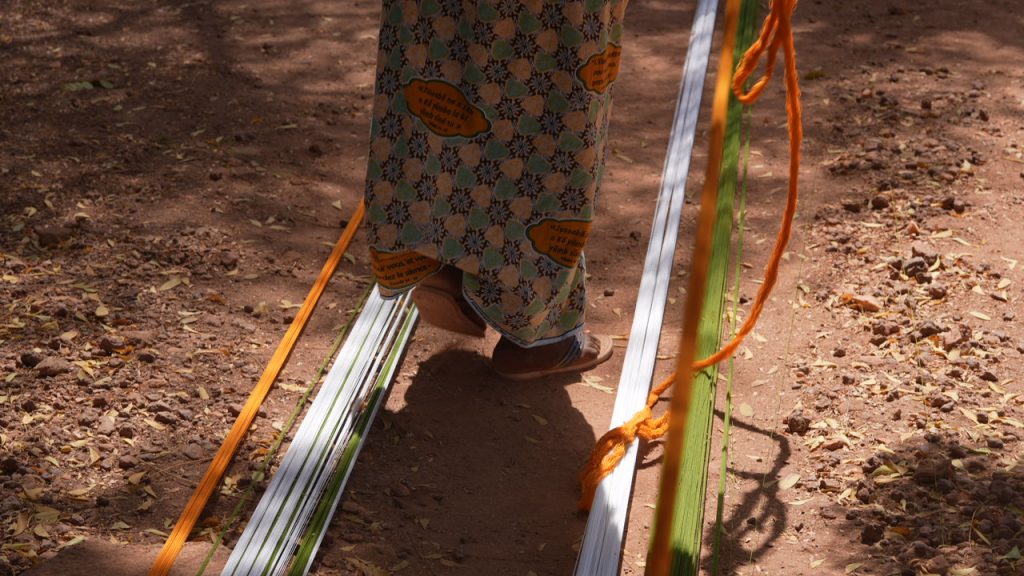
She considers a thread of decisions when putting together each clothing item. “The most important [part of the clothes] is the fabric. I also design all my fabrics, so all the hand-woven fabrics that you see are exclusively made in-house by Kílẹ̀ńtàr,” she said. Even the cotton from which the fabrics are made is cultivated in the continent.
Historically, Burkina Faso, one of the production sites for Kílẹ̀ńtàr, was the largest producer and exporter of cotton. That position is now held by Mali. To make Kílẹ̀ńtàr’s cotton-based clothing, cotton is harvested and separated into threads, spun on a wheel to form a continuous, strong strand of yarn, and dyed.
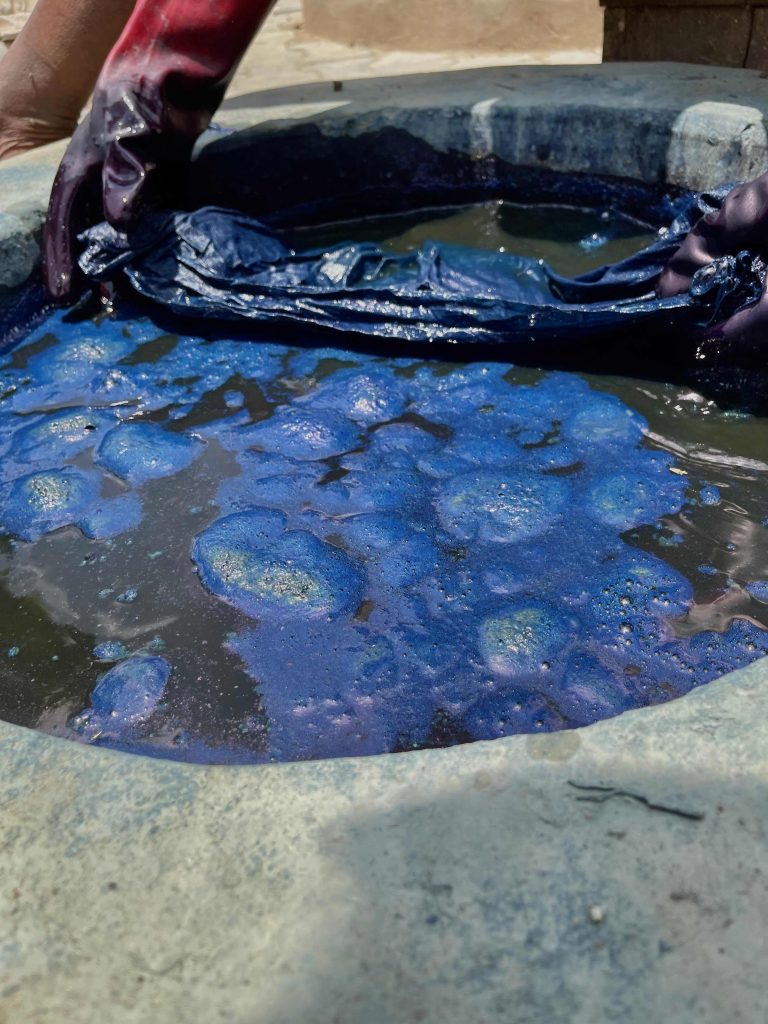
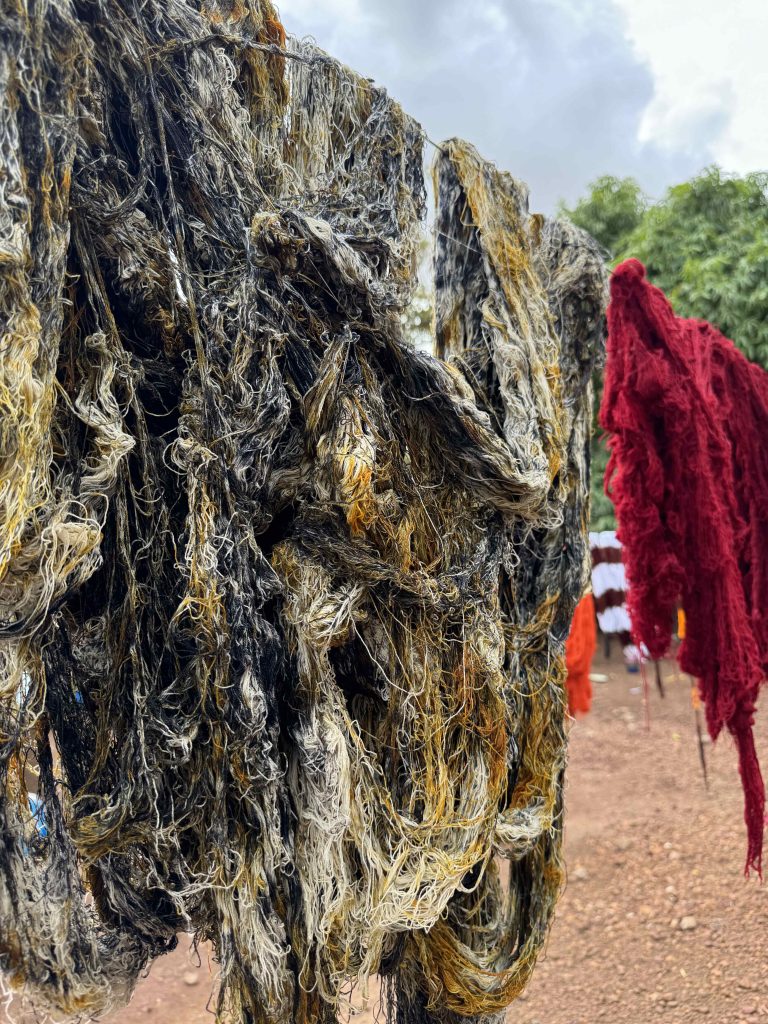
The coloured threads are then prepared on a loom to be woven into fabrics. The process leans strongly on the craftsmanship of local artisans, especially those in Burkina Faso and Nigeria.
“Wherever the fabric is being made from, if it’s being made in Burkina Faso or if it’s been made in Senegal, the fabric has to come to Nigeria, because it’s being produced in Nigeria,” Adepoju explains. With already approved patterns made on a simple fabric, the production for the final product begins.
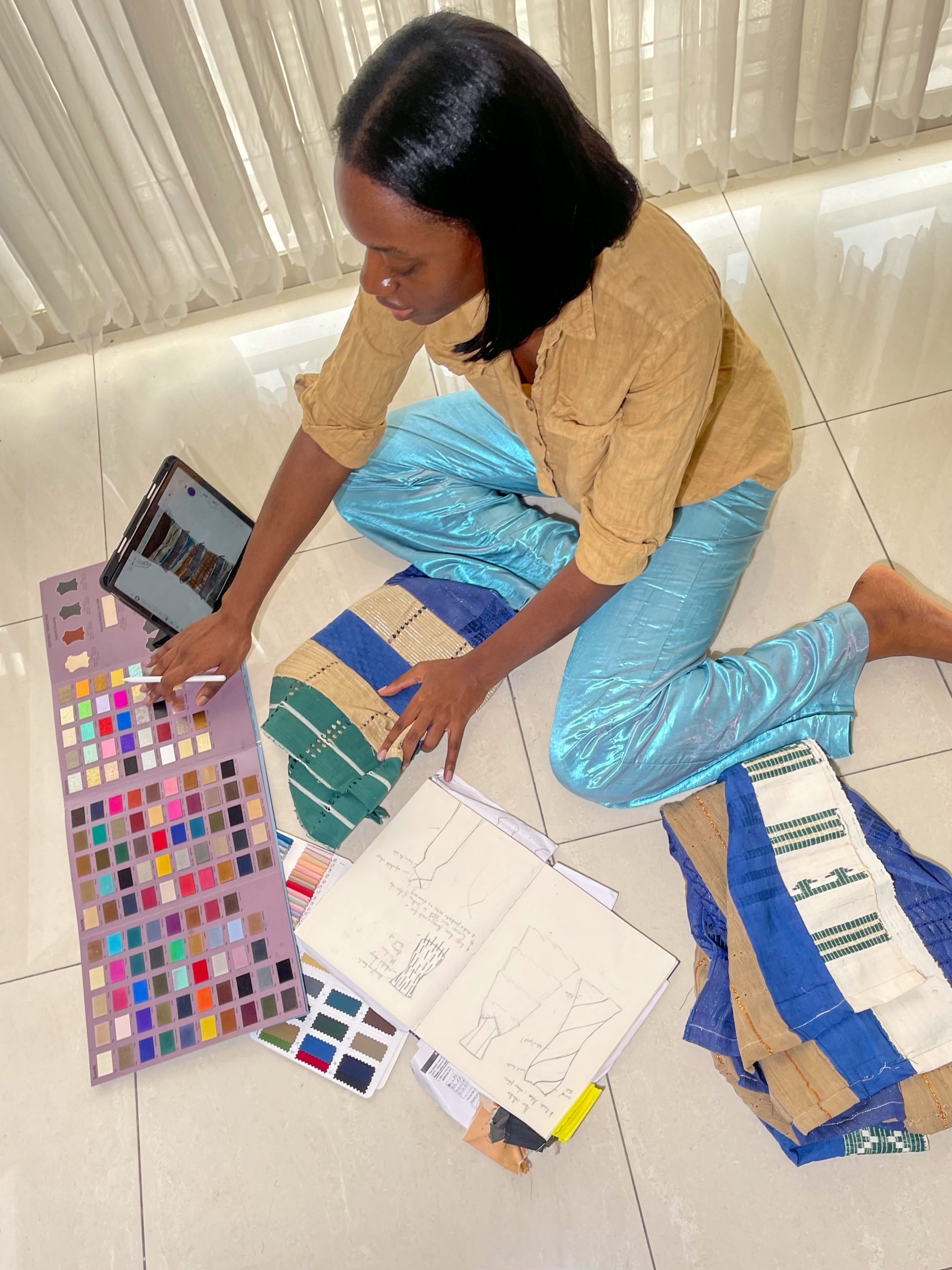
However, with diverse regulations across countries and informal trade networks, logistics of the raw materials is one hurdle for the fashion brand.
According to Mordor Intelligence, Africa’s global cotton market is fast-growing and is projected to expand at a 5.60% compound annual growth rate (CAGR) through 2030. In 2024, the Better Cotton initiative started efforts to strengthen supply chains within the West African region. This included sustainability mapping and assessments to improve the cotton-to-textile value chain within West and Central Africa.
Yet, supply and distribution gaps remain for cotton and other raw materials. For Adepoju, because of these limitations within Africa’s trade infrastructure, committing to locally sourced and produced materials involves travelling around the continent herself to source materials and bring them down to Nigeria.
The logistics problem
Logistics, too, presents significant challenges. Adepoju alternates between air and ground logistics to deliver her raw materials to Nigeria. In a last procurement trip, Adepoju recalled that the cost of the airfare had tripled. From Lagos to Burkina Faso where Adepoju interfaces with her artisans and sources for Kílẹ̀ńtàr, there are no direct flights, a journey of about three hours. Instead, Adepoju travels for about eight hours with different flights to connect both countries. “We’re still figuring out the best approach to get our pieces to us more smoothly,” she said.
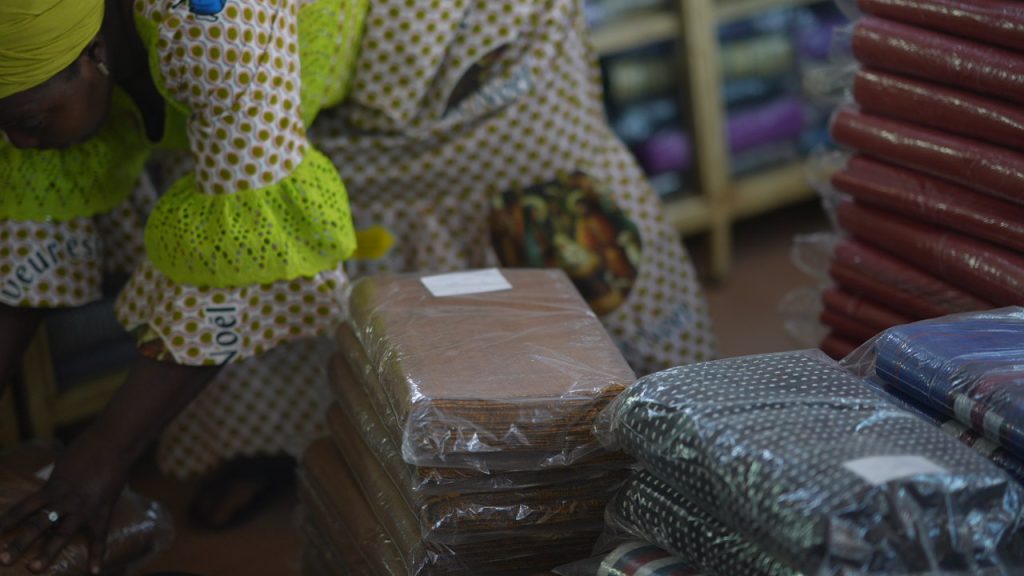
In addition, shipping these sourced materials by air to Nigeria for production also necessitates an expensive border clearance. The African Continental Free Trade Area (AfCFTA) has provisions for smoother logistics for trade across the continent. The protocol on trade in goods incorporates the gradual elimination of tariffs and non-tariff barriers, and improved customs procedures. But implementation of these protocols has not been harmonious across regions, especially Nigeria, where the brand’s production is domiciled.
In July, the Federal Ministry of Industry, Trade, and Investment of Nigeria completed a five-year review on the country’s implementation of Phase I of the AfCFTA protocols. These include the protocol on trade in goods and the protocol on trade in services.
The review revealed gaps in Nigeria’s implementation strategy that currently weaken its effectiveness, including logistical constraints and policy misalignments, which the ministry identified.
In the 2023 World Bank’s Logistics Performance Index (LPI) report, which ranks countries on six dimensions of trade, including the efficiency of customs and border management clearance (“Customs”) and the quality of trade and transport infrastructure (Infrastructure), Nigeria scored 2.6 out of 5, while Burkina Faso scored 2.3. West Africa, where the fashion brand primarily operates cross-border operations, generally ranks near the African average for logistics performance. Southern Africa leads the continent with high indices, such as South Africa at 3.7 and Botswana at 3.1, indicating strong logistics capabilities.
Northern Africa shows solid performance too, with Egypt at 3.1 and Algeria at 2.5, while Morocco, ranked 2.54 in 2018, was unranked in 2023. East Africa has varied scores, with Rwanda at 2.8 and Namibia at 2.9. Central Africa tends to have lower scores overall and below West Africa’s, contributing to the regional disparities in logistics ease across the continent. This landscape highlights stronger logistics and cross-border trade facilitation in Southern and Northern Africa relative to West, East, and Central Africa.
In the 2025 Future of Commerce report by Insights and Sabi, Nima Yussuf, Chief Operations Officer of Silverbacks Holdings, said: “Private capital already tackles infrastructure but is blocked by fragmented regulations.” Yussuf added that “the AfCFTA is the high-level solution, but its success requires the digitisation and harmonisation of trade policies, from streamlining customs to standardising digital IDs. Until this happens, every cross-border expansion remains a costly, manual effort, making true pan-African scale too expensive.”
Sabi helps to fill these procurement and logistics gaps, but for minerals. It does this by connecting global buyers with vetted miners and producers across key African markets. Its primary focus, as a growing digital commerce and supply chain platform specialising in African minerals, significant impact on improving traceability, quality, and market access for miners. In light of this, there is a strong opportunity for more supply chain platforms to build for more industries, especially for African textiles and commodities.
The inadequacy of the trade infrastructure has so far led Adepoju to be her own brand’s own logistics provider. This continues to be the case, not just for her, but other African-based entrepreneurs with cross-border operations.
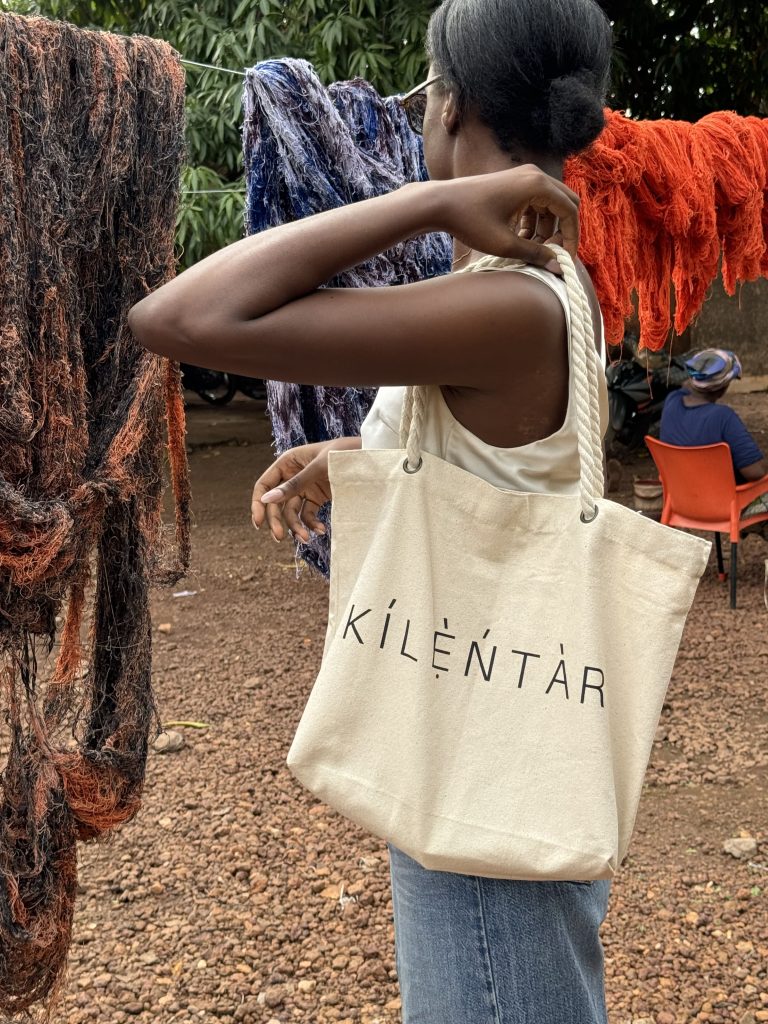
Ethics & sustainability
Beyond the physical movement of goods, Kílẹ̀ńtàr’s commitment to sustainability is another point of friction. Adepoju ensures that sourcing and production are ethical and sustainable, and this limits the number of pieces the brand can produce at once.
From using natural dyes in the process, which she noted has low toxicity, to emphasising quality control with the artisans, Adepoju says “the process is really tight, which means that we’re able to have fewer and more intentional prototypes to avoid unnecessary waste.”
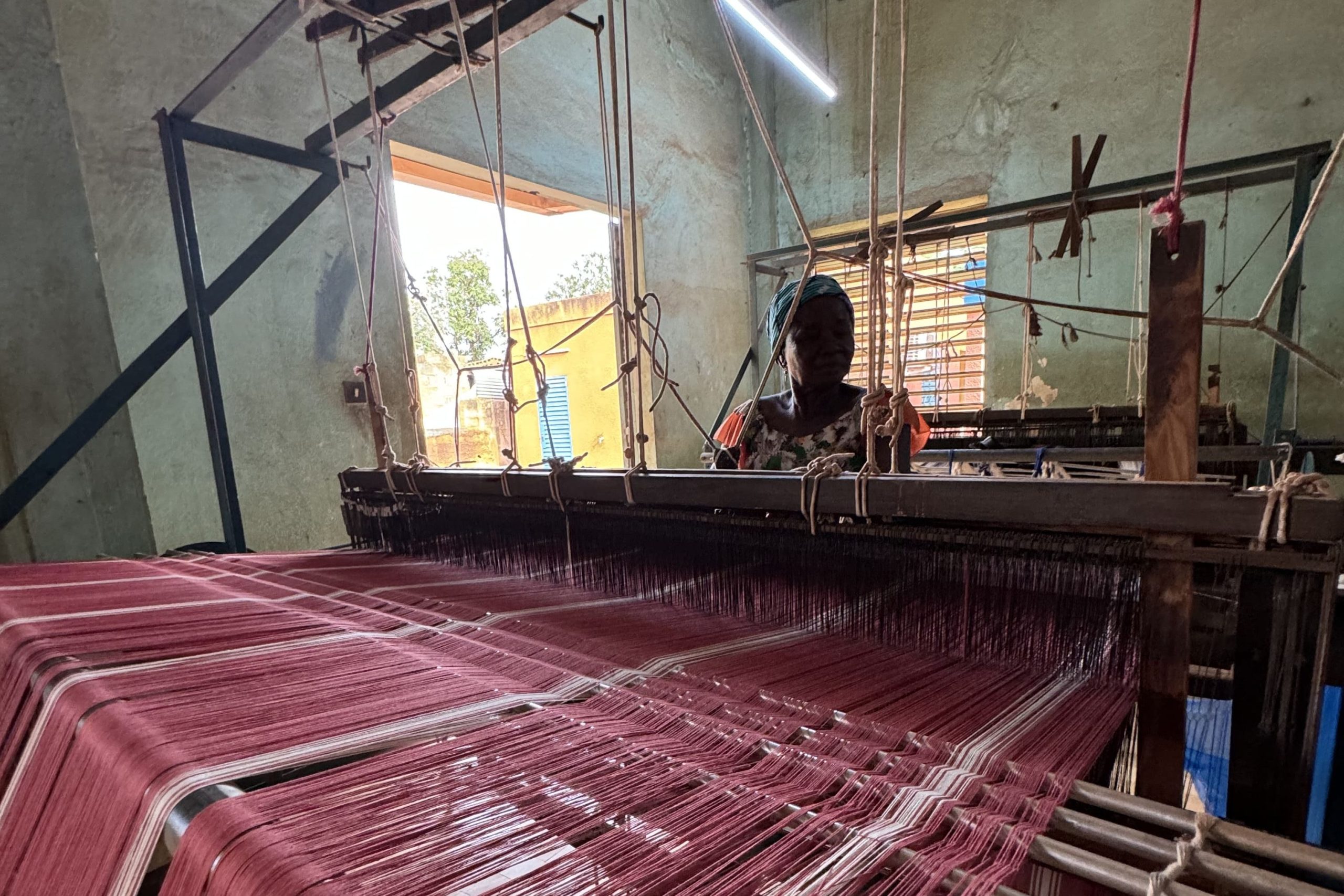
The fabrics for the clothing take time to make. So, the weavers start working on the fabrics months before a collection is released. But the amount of material available for production is determined by availability and capital. Some materials, like cotton, are more readily available than others.
Through the production process, Adepoju provides her artisans and team with a checklist for quality control, ensuring fewer remakes and returns. To support this, Kílẹ̀ńtàr also has a tight return policy, which the brand ensures its customers are aware of. For Adepoju, she’s building a strong culture with her customers to shop intentionally.
Financial inclusion and unbanked artisans
The third key challenge in Kílẹ̀ńtàr’s cross-border operations is the digital finance gap. While the finished products are sold globally via Shopify, her supply chain is held back by the limited financial inclusion of its core artisans, some of whom are unbanked. “When I want to work with someone in a country and I can’t pay them, I will meet them, and I’ll give them cash. At the beginning, that was the only way we were able to pay our artisans…that is still the only way we can pay them, by the way.”
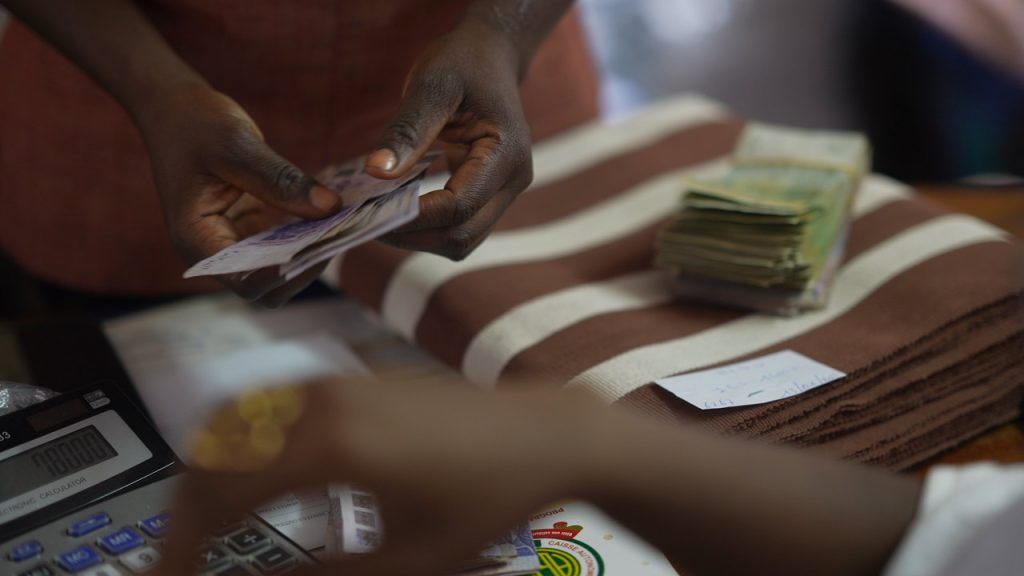
To navigate this, she has now built a network of people who make payments to unbanked artisans, which includes wiring funds to her manager in another country, who makes the payment in cash to the artisans.
From Africa to the world
But despite these hurdles, Adepoju leverages storytelling and social media to carry the Kílẹ̀ńtàr narrative. Across her social pages, she shares the journey of the women who weave the fabrics, the processes behind-the-scenes of her clothing shoots and why her commitment to heritage is important. In its nascent stage, social media played a heavy role in the visibility of the brand. It still does.

Adepoju recalled that during the pandemic in 2020, she posted every single day, sometimes twice a day. “People always want to feel something, [so, I said], let’s tell our story, let’s put people on the journey, let’s show the process [behind creating these clothes], and people immediately connected with that.”
That was where the virality clicked in. She posted an adire (tie and dye) top called the Joyo top, announcing it was back in stock. Within 24 hours, she had received one hundred orders. “I didn’t have 100 pieces to sell because I didn’t have fabric,” Adepoju said. She shared this with her followers, explaining that their orders would take some time. To her surprise, they were willing to wait. “They appreciate that I’m showing them the journey,” she said. Western luxury brands have thrived on scarcity and secrecy about their backend production, she argued, and this ‘gap’ was something to fill.
“That’s honestly my favourite part about having the business. I love to travel, and I love to show people the process.”

Beyond social media, each item delivered to a customer carries a QR code that, when scanned, redirects them to a video showing the production of the piece they’ve purchased, as well as the artisan who crafted it.
As the years have gone by, since that first visit to Burkina Faso, Adepoju has gone from using a translator to learning the local dialect to communicate better with her artisans. Despite the gaps, she commits to building, especially with other Africans, and she encourages African entrepreneurs looking to build on a global scale to do the same.

“If you’re building for Africa, you should also build with Africa. Technology alone won’t solve the [gaps] in the supply chain; more relationships and trust will. So, focus on how you’re going to work with the people. Start by understanding the people, design for what exists, and then innovate.”












